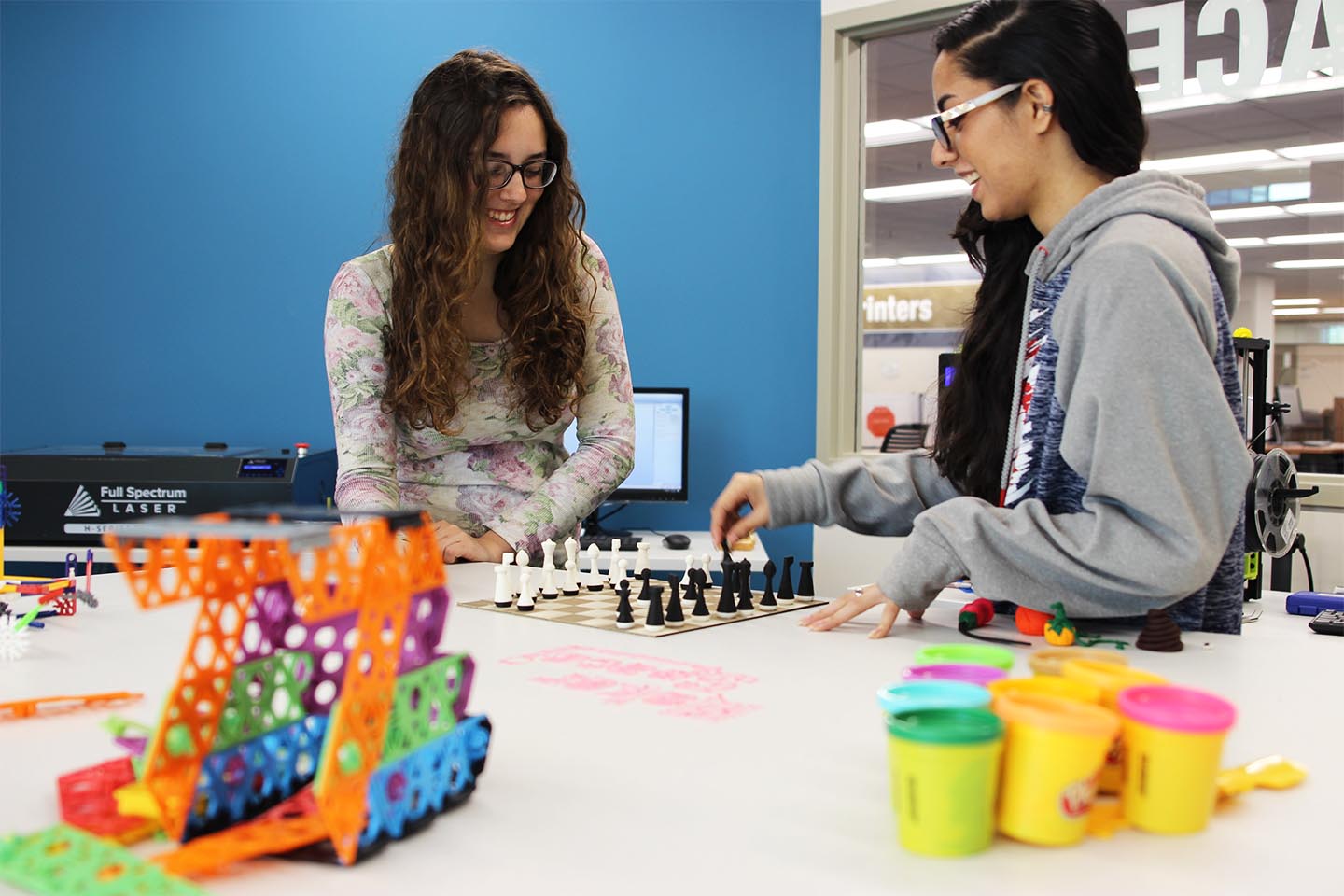OU’s Kresge Library opens makerspace to inspire student collaboration, creativity

In an ongoing effort to encourage students to create, connect and inspire, Oakland University’s Kresge Library recently opened a new makerspace, complete with a 3D printer and other state-of-the-art technology.
“The makerspace is basically a place where students can come and be creative,” said Amy Pelkey, library technology services assistant. “We’re providing some of the things they may not have access to otherwise.”
Open from 10:30 a.m. to 5:30 p.m. Monday thru Friday, the makerspace is located on the main floor of the Kresge Library in a room that was once used to catalog books.
“When the space became available, we cleared it out and hired an exploration team,” said Kresge Library Technology Services Manager Rob Burns. “In January 2017, we started the implementation phase, but the real hands-on work started in August. Since then, we’ve become experts in makerspaces.”
Also known as hackerspaces, hackspaces and fablabs, makerspaces are places where people with common interests, often in computers, machining, technology, science, digital art or electronic art, can meet, socialize and collaborate.
“It’s part of the library’s mission to provide a learning environment,” Burns said. “One of the ways we can do that is with a makerspace, where people can come in, with no real purpose in mind when they come in, and get inspired to do things that they didn’t think they were going to be able to do.”
According to Josh LeVoir, programmer analyst, the makerspace provides students with access to a 3D scanner, vinyl cutter, 3D pens, Makey Makey (a tool that allows users to connect everyday objects to computer programs), Raspberry Pi 3, and a 3D printer.
“The 3D printer can print a wide variety of 3D models – action figures, toys, cookie cutters, decorations jewelry, etc. – based on files that students can find online, or that they create themselves,” LeVoir said. “It uses fiber-based filament made from plant proteins, so it’s all biodegradable, safe, and there are no toxic fumes.”
Students are charged 28 cents per gram based on the amount of filament they use.
“A turtle figurine is going to be about 8 grams, so it would cost a little over $2,” Josh said. “If you were to buy something similar online, it would cost about $20, so what we’re charging is significantly lower.”
The makerspace is available to OU students, faculty and staff.
For more information, visit library.oakland.edu.
